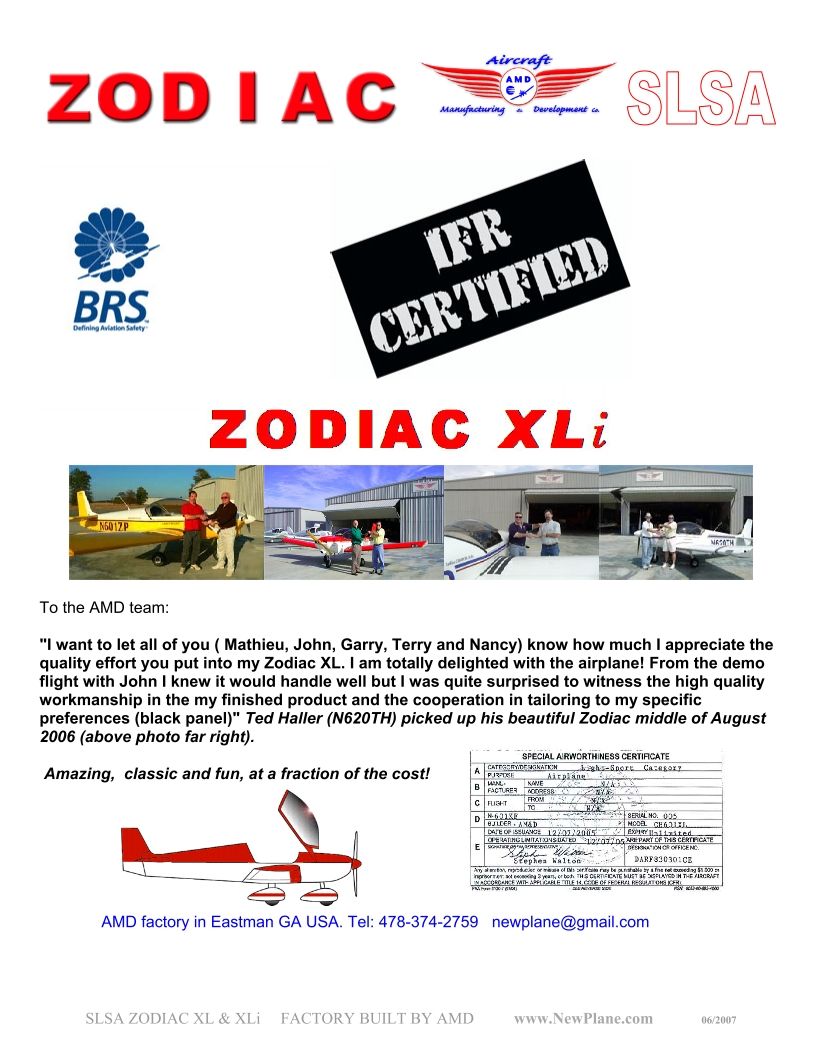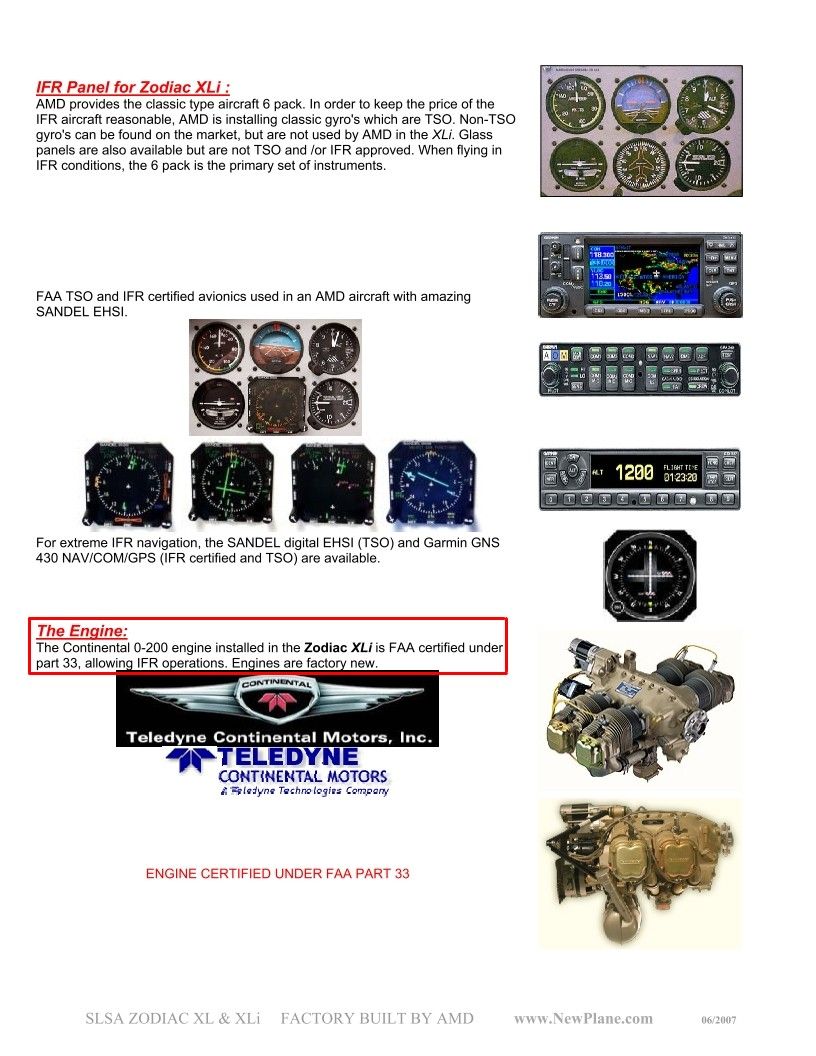AggieMike88
Touchdown! Greaser!
- Joined
- Jan 13, 2010
- Messages
- 20,805
- Location
- Denton, TX
- Display Name
Display name:
The original "I don't know it all" of aviation.
Can anyone point me to a list of Light Sport Aircraft that are IFR certified?
Can anyone point me to a list of Light Sport Aircraft that are IFR certified?
Then I will amend my request to ask for a list that permit me to accept an IFR clearance and fly through (mild and tame) IMC conditionsMany are "IFR" certified, few or none are "IMC" certified. I did some "IFR" training in my Flight Design CTLS.
Cheers
Can anyone point me to a list of Light Sport Aircraft that are IFR certified?
Why? You can buy a tricked out PA28/C172 for a lot less than the crappiest LSA...Then I will amend my request to ask for a list that permit me to accept an IFR clearance and fly through (mild and tame) IMC conditions
The ASTM is not a regulatory org. And most SLSA makers are not members.
Any E-AB or normal certificate LSA with the appropriate instruments?
I'm no expert, but I believe the ASTM standards are effectively "regulatory" because of the FARs.
Under FAR 21.190(c), it looks like meeting the provisions of an identified "consensus standard" is a condition of getting a "special" airworthiness certificate.
No real knowledge here though.
For the SLSA makers you say are not using the ASTM standards, which makers are you talking about and what other "consensus standard" do they use to satisfy the FAA?
More than a few E-AB have op-lims that allow IFR. https://www.eaa.org/en/eaa/aviation...ions/equipping-a-homebuilt-for-ifr-operationsWhat do the operating limitations say? It should tell you what operating conditions it can be used under.
The Legend Cub I'm familiar with says something to the effect of "Day VFR and if appropriately equipped, Night VFR." There was no mention of IFR, so I read this as those operations are not approved regardless of how the airplane is equipped.
More than a few E-AB have op-lims that allow IFR. https://www.eaa.org/en/eaa/aviation...ions/equipping-a-homebuilt-for-ifr-operations
The original post asked about Light Sport Aircraft and did not specify how said LSA should or should not be certificated.E-AB, yes. But we're talking S-LSA, no? I'm not sure what would be in the operating limitations for an E-LSA but the operating limitations you receive with the airworthiness certificate is where I'd be looking to determine if IFR operations would be approved or not.
Can anyone point me to a list of Light Sport Aircraft that are IFR certified?
Here is an interesting discussion on the subject: http://www.vansairforce.com/community/showthread.php?t=136993
The original post asked about Light Sport Aircraft and did not specify how said LSA should or should not be certificated.
A year+ old thread, I know, but have any of you moved your SLSA to ELSA and are now flying it in (light) IMC? My SLSA qualifies for IFR under 91.205 and the operating limitations don't preclude IMC or IFR, but my POH prohibits IMC. I was able to fly IFR in the system enough to get my IFR rating, but can't fly in the clouds in this plane right now.
So the question again: Are any of you flying in IMC with a plane moved from SLSA to ELSA?
Why do you think this is a trick question? It's safe and legal as far as I know, just wanted to know if other pilots were doing it before I switched my plane from SLSA to ELSA.Is this a trick question?
Are you an FAA informant?
Short answer: Occasionally, but not deliberately.
A year+ old thread, I know, but have any of you moved your SLSA to ELSA and are now flying it in (light) IMC? My SLSA qualifies for IFR under 91.205 and the operating limitations don't preclude IMC or IFR, but my POH prohibits IMC. I was able to fly IFR in the system enough to get my IFR rating, but can't fly in the clouds in this plane right now.
So the question again: Are any of you flying in IMC with a plane moved from SLSA to ELSA?
Rob, I didn't see anything in that Van's thread about LSAs being legal for flight in IMC (the subject of this thread).Here's a thread where a DAR clarifies the rules about LSA airworthiness certification:
http://www.vansairforce.com/community/showthread.php?t=166044&highlight=e-lsa+s-lsa


FYI: the new Operating Limitations you receive with your amended AWC after you convert to ELSA will be the authority on the flight conditions you can operate in. Might inquire with the DAR/FSDO prior to converting to see on IFR ops. If your aircraft conforms its required SLSA configuration with a current condition inspection, the conversion to ELSA is administrative with a visual check by the DAR/FSDO.before I switched my plane from SLSA to ELSA.
FYI: there is not a single standard for LSA rather a dozen in total. In several of the standards there is wording to the affect "limited to VFR flight" which is not the same as "IFR prohibited."ASTM standards for LSAs “prohibit” flight in IMC, but I’ve never seen the actual standard that does that
All standards whether ASTM, SAE, ISO, or others are not public domain material. They are readily available to those who wish to purchase. Here is a link to the FAA standards listings for LSA and other aircraft. Scroll to the "Industry Standards" header. Those links will take you to the current FAA standard listings: https://www.faa.gov/aircraft/air_cert/design_approvals/small_airplanes/small_airplanes_regs/If anyone has a copy, please post it,
In summary, if you are an instrument pilot, and if you are current, and if you have a medical, and if you purchase an aircraft like the Bristell and register it as an ELSA, no regulation prevents you from filing and flying IFR including into IMC.
Correct. And the same goes in the TC world but from the other end. I don't know fixed wing as well but on the helicopter side you will be hard pressed to find an IFR capable, single engine rotorcraft certified under Part 27 even though there is a process under Part 27 to include IFR capability. No OEM, to my knowledge, has completed that process through 27 for SE models. Yet there are IFR capable SE models flying today. The OEMs that do provide IFR kits use Service Bulletins or STCs to upgrade the helicopter for those who wish that capability.applies only to LSAs designed and equipped to be flown VFR, because the specification doesn't include features that may be necessary for flight in IMC.
FYI: IFR Trainers are just that. One of the only ways to get an instrument ticket in rotorcraft without breaking the bank and selling your 1st born is using a R22 Instrument Trainer. Regardless of the training it still requires the CFI to remain under VFR as the aircraft is not IFR capable.Instrument Rating instruction
+1But I have seen the operating limitations for LSAs that expressly permit flight in IMC if properly equipped.
Rob, I didn't see anything in that Van's thread about LSAs being legal for flight in IMC (the subject of this thread).
My 2008 AMD CH601XLi-B Zodiac was widely advertised as "IFR certified" as illustrated in this ad.


My understanding (and I could be mistaken) is that in 2010, there was a change brought about by a failure of the ASTM working group to come up with a standard for SLSAs to be operated in IMC since by definition Light Sport aircraft operated by sport pilots couldn't be flown in IMC.
However, there is nothing in the regs that prevents a private pilot with a current medical certificate or the alternative BasicMed and an instrument rating from flying an ELSA in IMC if the ELSA meets the requirements of FAR 91.205(d) and the operating limitations for the ELSA stipulate that instrument flight operations are authorized.
That hasn't been my experience at all. As a result of the FAA and NTSB investigations following the unexplained mid-air breakups, the CH601XL Zodiac design is probably the most scrutinized LSA since the 2004 introduction of Light Sport. In the eight years following the 2010 "B" structural modifications incorporated after the design review, the model has achieved an admirable safety record.A club in my area bought an IFR Zodiac many years ago and sold it rather quickly. Not only would the plane not hold up under high utilization and was not fun to fly, the 430 that they bought with the aircraft was not properly certified and documented for the aircraft.
Zodiac is a total joke.
